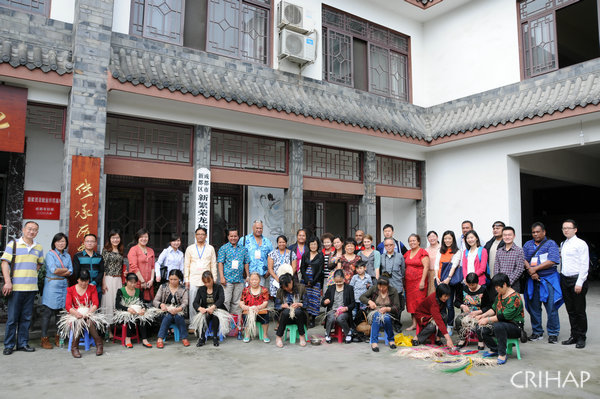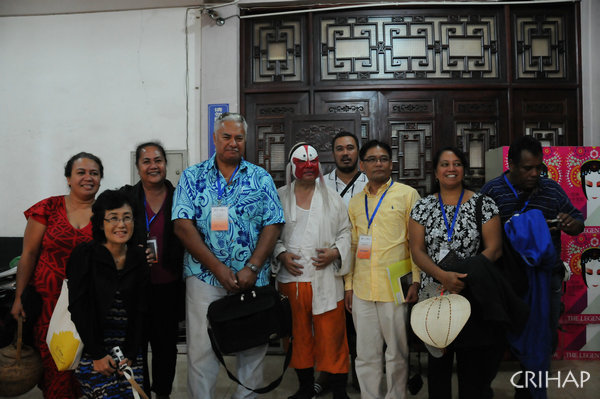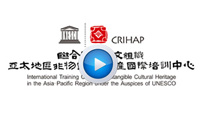Home >> Programs>>Regular Course

Workshop on the ratification and implementation of the 2003 convention held in Chengdu
2014-09-16 CRIHAP T- T+
Field Study
• Xinfan zongbian, or palm fiber weaving from Xinbian town in Sichuan province

Stemming from the Emperor Jiaqing’s reign during the Qing Dynasty, Xinfan zongbian has so far lasted for more than 200 years. It was recorded in historical documents that Xinfan women’s tradition of “dissecting tender palm leaves into fibers, and weaving them into sandals.” The raw materials of Xinfan zongbian mainly come from mountainous areas of Pengxian, Dayi, Qionglai and Dujiangyan counties. After being combed by row needles, the palm leaves that craftsmen collect from these areas each April will be turned into palm fibers, like green noodles. These palm fibers will go though a series of processes - twisting, steaming, bleaching and airing, after which they will become white and soft, material ready to be used. Or they can be partly dyed in multi-colors, like flowery silky ribbon and used as special decorations of palm-fiber-woven objects.
Each summer and autumn is the peak season of Xinfan zongbian’s production. The production varies as seasons and demands change, with summer hats and sandals processed in summer and handbags in autumn. Widely known to everyone in Xinfan area and mastered by many rural women, the skill of Xinfan zongbian is quite complicated in terms of its weaving and processing. It takes more than 10 steps to complete one piece of work. Take a summer hat as an example. A skilled craftsman can only complete two summer hats a day, which shows the complexity and delicacy of the craft.
The major products of Xinfan zongbian, including hats, shoes, pillow cover, summer sleeping mat, chair cushion, handbag, fruit bowl, schoolbag and toys are closely related to people’s daily life and well received by people. The products woven in plain-color palm fiber, in particular, tend to have an elegant silk-like effect.
• Sichuan Opera

Sichuan Opera is a synthesis of five historic melodic styles, which are rarely seen in Chinese operas. It is popular mainly in Sichuan, Yunnan and Guizhou provinces.
There were opera troupes prevalent in some areas of Sichuan province in the Ming Dynasty. After that, Kunqiang, Gaoqiang, Bangzi and Pihuang melody merged with local lantern dramas during the reign of Yongzheng and Qianlong Emperor in the Qing Dynasty, when Sichuan Opera started to take its shape. Sichuan Opera is characterized by its rich local flavor and humorous expression, having a systematic performance formula with a combination of stunts like lifting, face-changing, sword-hiding and fire-spitting, etc. Sichuan Opera has a wide repertoire of traditional plays.
The play on show this time is a traditional one performed by the actors and actresses from the Academy of Sichuan Opera in Chengdu. With its origin dating back to the notable Sanqinq (Three Celebrations) Company, the Academy is one the most renowned professional opera troupes. The special artistic style of Sichuan Opera is well inherited and developed by the Academy.
The Academy has composed and performed many influential works such as Legend of the White Snake and Princess Wencheng, winning many awards from the Propaganda Department of the Central Committee of the CPC and the Ministry of Culture, and fully showing how an opera academy facilitates the development of a type of opera.
Address: No.1, Hui Xin Bei Li Jia, Chaoyang District, Beijing, China
Zip Code: 100029
Tel: 86-10-64966526
Fax: 86-10-64969281
E-mail: generaloffice@crihap.cn


